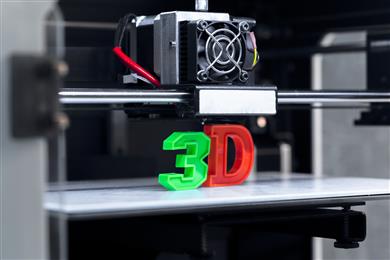 Project reports more than 27 percent energy savings with newly developed styrenics based polymer
Project reports more than 27 percent energy savings with newly developed styrenics based polymer
Energy savings increase to two thirds, when taking material production into account
INEOS Styrolution, the global leader in styrenics, announced today first results of the PolySLS project, which is focused on developing a new energy saving styrenics based material for additive manufacturing, otherwise known as “3D printing”.
The project has been able to show that significant overall energy savings of up to 67% have been achieved when taking the entire life cycle of a new styrenics polymer compound into account compared to using traditional Polyamide 12 (PA12).
A direct energy saving of 25% was achieved from the 3D printing equipment when using the new styrenics polymer, resulting from lower process temperatures and shorter heating and cooling phases. This also improved the time needed to complete printing jobs, with processing times 7.5 percent shorter than with PA12.
Bianca Wilhelmus, Global Application Development Manager at INEOS Styrolution and Project Lead for PolySLS: “Styrenics based materials continue to amaze me. Even 90 years after the first production of polystyrene, there are still new things to explore. Styrenics based materials have incredible, beneficial properties.”
Yvonne van Veen, Market Innovation Strategy Director at INEOS Styrolution, adds: “With the additive manufacturing industry growing at very high rates, we are excited we have developed a material that not only contributes to energy saving and sustainable production but also is an easy material to handle in the printing process.”
The PolySLS project was funded by the German Ministry for Economic Affairs and Energy (BMWi). The purpose of the PolySLS project was to develop and test a new styrene based polymer compound for Selective Laser Sintering (SLS). A particular focus of the project was on researching energy and material requirements[1].
The project was started in August 2017 and carried out in collaboration with the Süddeutsche Kunststoffzentrum[2] (SKZ-KFE gGmbH) and the Friedrich-Alexander-University Erlangen-Nuremberg[3]. The project ended in November 2020.
www.ineos-styrolution.com


















































































